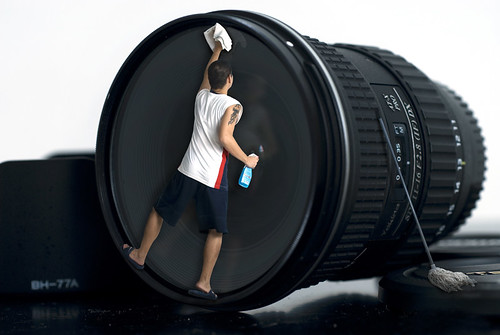There are a lot of smart people out there today who ought to be ashamed of themselves. The spectacle of so many geeks surrendering to Apple’s Reality Distortion Field over the iPad has become positively nauseating. For many years I’ve been influenced by Neil Postman’s conjecture that our future would be book-ended by the insights of two authors: at one extreme is Aldous Huxley, who thought that we would be destroyed (i.e., rendered passive and happily acquiescent) by the things we love; and George Orwell, who thought we would be destroyed by the things we fear.
The iPad is the latest embodiement of Huxley’s Soma. It’s a seductive, closed device designed for passive consumption of pre-approved objects. That’s why the old ‘content’ industries are slavering over it. They see it as the way to undo all the damage wrought by the openness of the Web and its TCP/IP underpinnings, a way of rounding up all those escaped couch-potatoes and getting them back into the pen. And of being able to charge them for everything they use — and collect the money via Apple’s toll-gate.
All of which is predictable. What wasn’t predictable is the way the hive-mind of geekery would check out its formidable collective intelligence at the door and go all gooey over Mr Jobs’s latest coup. A puppy lying on its back and asking to have its tummy tickled is a paragon of stern objectivity by comparison. My Twitter stream — which is largely fed by people whose intelligence and judgement I respect — has morphed into a drip-feed of drooling acquiescence that Huxley would have recognised.
Here and there I’ve found vestiges of independent thinking. Cory Doctorow, for example, has written a terrific essay likening the iPad to “the second coming of the CD-ROM “revolution” in which “content” people proclaimed that they were going to remake media by producing expensive (to make and to buy) products.” Quinn Norton has a moving post about the socio-economic dimension of all this:
I live a really rich intellectual life and get to do lots of things most poor people don’t, and I appreciate that it’s because almost none of my social group are poor. But sometimes my social group kind of goes crazy and forgets that while they have a lot of power, my class is a whole lot bigger than theirs. And none of them will be buying iPads.
A few of them do have iPhones, because phones are one of those durable goods we need to survive and that’s most of their meager disposable income. A few probably have iPod touches that they got as gifts, hand-me-downs, or because that was their one nice thing they wanted. But the iPad does absolutely nothing vital, and nothing a cheaper piece of electronics doesn’t already do well enough to get by. I’m pretty sure Apple knows this, and couldn’t care less. Poor people do buy iPods, sometimes even new, but they’ve never bought anything else Apple has ever made. And that’s fine. I’ve never felt the urge to get me some Tiffany, and they’ve never felt the need to try to get my money. Similarly, Apple’s just not a brand very open to the poor. But why does this mean anything to the political arguments? Because other vendors out there do want to take our money. We don’t have much, but there’s a lot of us, and unlike the other classes, we’re getting a lot bigger.
And Aaron Schwartz is characteristically thoughtful about the brouhaha:
A lot of people have argued that requiring Apple to approve every application for the iPhone OS is some kind of “mistake”, something they’ll remedy as soon as they realize how bad things have gotten. But recent events — Phil Schiller’s personal interventions, comments on their call to analysts, etc. — have made it clear it’s not a mistake at all. It’s their plan.
The iPad is their attempt to extend this total control to what’s traditionally been thought of as the computer space. This is just the first step, but it’s not hard to imagine Apple doing their best to phase out the Macintosh in the next decade, just as they phased out OS 9. In their ideal world, all computing will be done on the iPhone OS.
And the iPhone OS will only run software that they specifically approve. No Flash or other alternate runtimes, no one-off apps or open source customizations. Just total control by Apple. It’s a frightening future.
There are doubtless some more signs of independent thinking out there, but they are exceptions that prove the rule that the tech-savvy community has succumbed to mob hysteria. In the newspaper business a recognised way of stopping journalists from becoming too enamoured of their own importance was to remind them that the brilliant story they had just filed (and of which they were so proud) would be tomorrow’s fish-wrapping. Perhaps the geek community should be reminded that Mr Jobs’s shiny new wonder will be eWaste in a couple of years?

